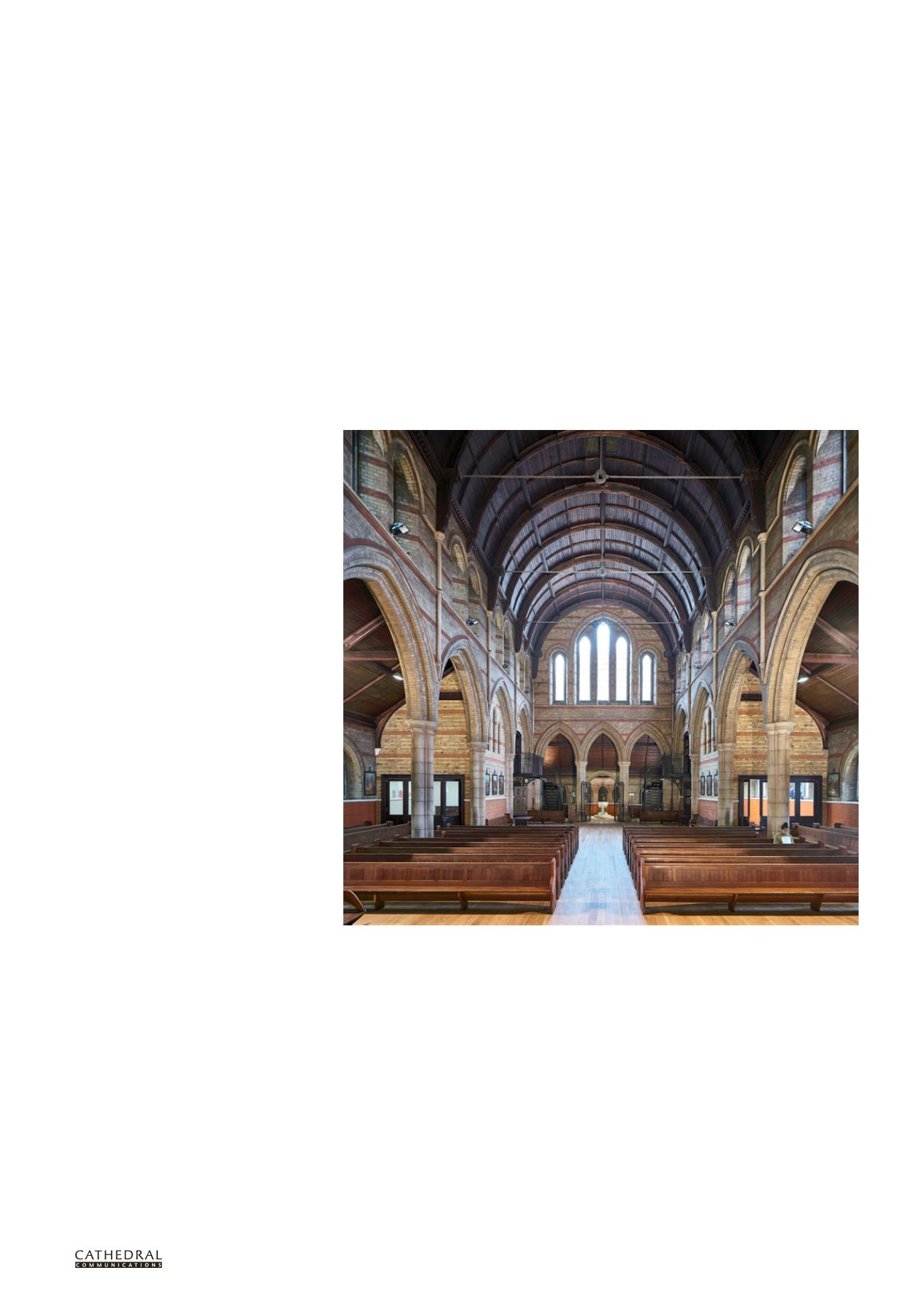

BCD SPECIAL REPORT ON
HISTORIC CHURCHES
24
TH ANNUAL EDITION
7
INTERVENTION
and EVOLUTION
at Emmanuel Church, West Hampstead, London
Neil McLaughlin
L
IKE MOST historic buildings,
churches develop over time to
accommodate the changing
needs of the people who use them.
For churches today, this means adapting
as congregations and surrounding
communities fluctuate, and in order to
remain at the centre of local activity,
many historic churches find they
need to diversify. By providing multi-
functional meeting rooms and modern
kitchen and toilet facilities, churches can
cater for a wide range of local groups.
Together with improved heating, lighting
and level access, these interventions
vastly improve the flexibility of
service which churches can offer their
communities. However, these changes
can be difficult to achieve in a historic
building, especially one that’s listed.
Located in West Hampstead and
close to inner-city areas of great
depravation, the church of Emmanuel
illustrates well how even listed
places of worship can respond to the
challenge of diversification. Today,
this Edwardian parish church hosts
activities organised through the West
Hampstead Community Association and
it has longstanding partnerships with
Alcoholics Anonymous and Narcotics
Anonymous. Emmanuel Church also
participates in a winter night shelter
scheme for the homeless, which is
operated by 14 Camden churches from a
variety of denominations. The churches
take it in turns to accommodate up to
16 homeless adults a night, providing
hot meals, showers and beds.
For the architects commissioned
to adapt Emmanuel Church, Francis
Maude and Neil McLaughlin from
Donald Insall Associates (DIA), the
first step was to assess its significance.
Using this knowledge as the basis of
proposed new interventions, DIA was
able to balance careful conservation
against sensitive new insertions in
locations of lower historic impact.
Listed Grade II, this Edwardian
Gothic Revival church was designed by
the architect JA Thomas of Whitfield
& Thomas in 1896 to replace a smaller
church situated a few streets away. Built
in red brick externally, with fair-faced
white brick with red details and stone
dressings internally, the chancel and four
bays were consecrated in 1898. A pause
in construction due to a lack of funds
meant that the nave, narthex and porches
were not completed until 1903, with only
the ground and first floor of the tower
eventually being built.
In 1968, a meeting room with a flat
roof was installed in the south aisle
and around the same time half of the
pews were removed and a WC and a
small kitchen area were installed in the
south west entrance porch. By the end
of the century, demand for community
The nave and narthex of Emmanuel Church, West Hampstead, with completed community rooms to either
aisle and simple railings (Photo: Thomas Erskine)


















